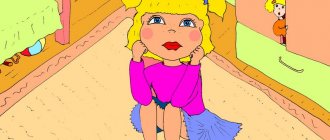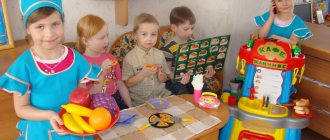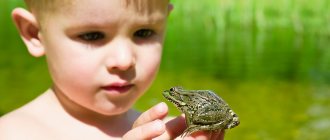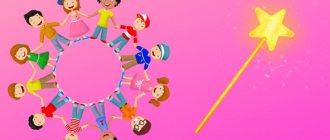How to teach a child to count?
IMPORTANT: Having decided to start teaching your child to count, you should have great patience. You can't shout or get nervous. The entire learning process should take place in a friendly, and, most importantly, playful atmosphere.
Starting from about two or three years old, you can teach a child to count to 10 , but it is better to divide this process into two stages.
At the very beginning, learn to count to 5 , and then to 10. This should be done in a playful way , counting together with the child his toys, surrounding objects, candies or fingers.
How to teach a child to count
It is mandatory, at the very beginning of mathematics, for the child to understand what is a lot or a little. You can put several toys on one side and only one on the other. For this you can use all surrounding objects. This also applies to such concepts as higher and lower, shorter and longer.
First method: While walking, it will be very fun to count trees, steps, birds, cars. You can even learn to count while dressing for the walk itself, putting one cap on your head and two socks on your feet.
Second method: You can count bright pictures in a book together with your child. Or you can draw and decorate balls or flowers yourself, and then count how many you got.
Third method: You should show your child that such knowledge is very useful. He can help set the table by arranging the required amount of cutlery.
Fourth method: Counting rhymes help very well in teaching counting. With their help, the child can easily and naturally remember a decent score.
Tasks for the little ones in pictures
Activities involving pictures are very common and very popular. We offer you a small list of these and brief instructions for use:
- Special cards for mastering counting and learning mathematical symbols. You can find them in any bookstore in a large assortment. You just need to show such cards to the child, explain what is shown on them, and use them to illustrate how to perform mathematical operations.
- Pictures with images of all kinds of objects. They can not only be counted, but also painted and arranged in the correct sequence. You can purchase didactic material in a store, or you can make it yourself (we recommend the first option).
- Images that involve matching pictures and numbers. It is very simple to use: the child looks at the picture, determines the number of objects and draws a line with a pencil to the corresponding number. Collections of similar images are also available in bookstores.
- Pictures that show different objects and require you to determine the quantity (little or many), size (small or large) and height (high or low).
- Images with specific tasks, for example, go through a maze, find identical objects, find differences, etc.
Kids really love tasks with pictures, because... they are funny, cheerful and colorful. But for you, as teachers, what is more important is that they clearly show the child what is what, thanks to which he easily remembers the material, understands the meaning of his actions and can explain it to you. Be sure that your child will look forward to each new lesson with pictures.
Video: Counting - Learning to count from 1 to 10 with a song
IMPORTANT: Activities should arouse interest in the child. If the mother notices that the baby is bored, or such lessons cause him discomfort, he should postpone training for a few days.
During the learning process, you should pay attention to simple geometric shapes. Just like learning to count, the whole process should take place in a playful way and using the example of surrounding objects.
IMPORTANT: Having learned to count to ten, you can move directly to the numbers, explaining to the child, with the help of pictures and objects, exactly how many objects represent a particular number.
Teachers do not advise introducing your child to the number 0 before he learns to count to 10 well.
How to teach a child to count
IMPORTANT: The child should not forget to praise and thereby encourage him to further success.
After your child has learned to confidently count to 10, you can begin to learn to count to 20 . As in the first case, you should start with simple examples, explaining to the child that after the number 11 comes the number 12, and after 12 comes 13. And so on.
In order to teach a child to count to 100, mom and dad should have great patience . Just gradually and slowly teach the child every ten.
IMPORTANT: You cannot squeeze knowledge out of a baby just because the neighbor girl is counting almost out of diapers. Each child is individual and requires a special approach.
What not to do?
Why is mental arithmetic so important for a future student? Because only it helps a preschooler develop intellectual abilities and memory. And also one important skill that we usually call ingenuity. Mental arithmetic helps you learn not only to count, but also to think quickly. This will be useful during subsequent socialization and will help you be successful in your career. Therefore, when teaching a preschooler mental calculation, it is important not to use methods that slow down his thought processes.
For example, modern teachers do not recommend starting to learn counting on fingers. They are always at hand, they can be examined and touched, the baby does not need to remember the quantitatively changed picture. And when the fingers run out, difficulties begin. This approach only slows down the development of intellectual memory.
Learning by writing down examples or using counting sticks can lead to the same result.
The habit of counting can also be developed slowly when learning to add or subtract by one (to add 2 to 2, you must first add 1, you get 3, and then add another one, you get 4). Counting means being able to add or subtract all number groups at once.
The method of counting using a ruler is very similar to working with a calculator (added numbers are put along a centimeter ruler to the right, starting from the first term, subtracted numbers are put to the left). There is no memory training in this case, however, this exercise works to reinforce the concept of “number series”, which helps the child understand the essence of subtracting and adding numbers.
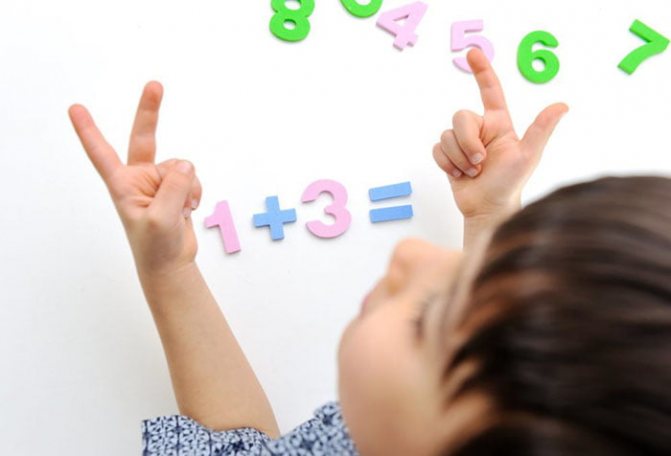
How to teach a child addition and subtraction?
Only when the child can already count to 10 can he start adding . To do this, you can use both toys and apples or other objects that interest the child.
EXAMPLE: Place one item on the table, and then add another one to it. In this case, it is necessary to explain to the child that one plus one equals two. Then you should add one more to these two objects, explaining to the child that one plus two equals three. Don’t forget to explain that two plus one also equals three.
Do not overload your child with information. You should gradually , as the baby perceives it, learn from more complex examples. The material covered should be reinforced with repetitions .
IMPORTANT: Parents must voice their every action, without this the child will not be able to understand what they want from him.
Rules
Finally, we will give parents recommendations that will help teach their child to count effectively and calmly:
- Together with your daughter or son, count everything you see around you: birds, steps you climb, steps.
- Say numbers often in normal everyday situations. Tell us what floor you are going up to, how many yoghurts you bought in the store, how many cats or birds you saw on the way home.
- Keep it interesting. Engage, use different methods, conduct classes in a relaxed and fun way.
- Repeat materials already covered more often so that your child does not forget them.
- At the first stages of learning, use counting rhymes. They are well remembered and help to master numbers.
- You can enroll your child in developmental classes. A professional teacher will certainly be able to find an approach to each specific child, attract his attention and choose a suitable teaching method.
- If your child attends kindergarten, ask the teacher what classes are offered and which ones are interesting to your son or daughter.
Are you planning to master counting to 10 with your baby? The methods, rules and tips from this article will certainly help you start and successfully continue your training. Patience and success to you and your children!
Video: Mathematical counting rhyme. Poems for adding and subtracting units. Our_everything!
When the child understands the entire process of addition, you can begin subtraction. to count backwards before learning subtraction , so it will be easier for him to master new information.
IMPORTANT: An excellent example would be if you put two apples on the table and then take one away. The child must say how many apples he has now. Children are great owners and will remember such examples well.
As with teaching counting, all mini-lessons should only be taught in a positive mood and with interesting examples . The manuals will help you cope with the task at hand. These can be either books or notebooks. But their choice should be taken with great responsibility.
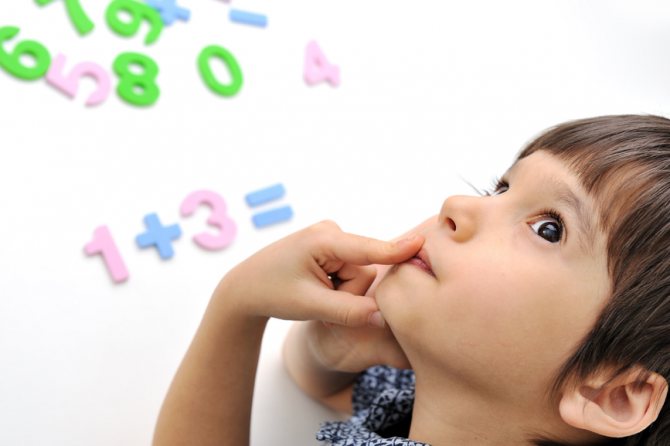
The game is the best way to teach a child to count
Children's educational games
We will not surprise you if we say that the best form of education for children is through play. If you build the learning process based on play, the child will be involved and interested in it. And even numbers that may seem boring will cause delight and bring pleasure. But we want to introduce you not to simple games, but to interactive ones, i.e. with those that you can easily download and install on your computer or tablet, or simply open on the Internet.
1
Game "Masha and the Bear Answer Questions"
A very exciting and colorful game where the child will have to be smart and use the ability to add and subtract. The point is that the little player must help Masha give the correct answers to mathematical questions. With this he will help her get to visit her grandparents. If the child answers incorrectly, the bear sits down on a stump, preventing Masha from passing. You need to give as many correct answers as possible.
2
Game "Math with Luntik"
Luntik is one of the favorite cartoon characters of children. If your baby plays this game, he will quickly master adding numbers up to ten. If the answer is correct, Luntik is happy, and if the answer is incorrect, he is sad. The tasks in the game are like this: Luntik writes an example with a plus sign, and the player must find the correct answer (several options are offered). The game is accompanied by pleasant music, which helps the baby concentrate.
3
Game "Bouquet"
The point of the game is this: flowers bloom in the garden and need to be placed in vases. The player is given three vases with different numbers. You need to put the appropriate number of flowers in each vase. So, while happily manipulating virtual objects, your child will quickly learn to identify numbers and relate them to the number of objects.
4
Game "Piggy treats"
Another wonderful toy, the main characters of which are Piggy and his friends. The goal of the game is to correctly distribute the food to the guests. For example, you need to help Piggy divide the nuts among everyone. There is a number next to each guest's plate, and the correct number of nuts should be placed in each plate. The game interface is designed so that the child can easily learn to count and remember the images of numbers.
5
Game "Count the Animals"
This game is suitable for kids who can count to five. Your child is presented with four pictures and one number, and he must find the picture in which the number of animals corresponds to this number.
By and large, you can find a lot of similar games. All that is required is to type the desired request on the Internet. But, of course, you shouldn’t limit yourself to games, because they should only be an accompanying element of classes. In addition to them, we strongly recommend that you do not neglect children's poems and counting rhymes, which activate children's thinking and make it more flexible. Be sure to include numbers when your beloved little one draws, paints, sculpts from plasticine or cuts out something. And don't forget about children's books that contain counting tasks, pictures of numbers, simple examples and other attributes of mathematics.
Speaking of literature: at the end of the lesson, we want to present several good teaching aids that will help you learn many interesting features of the process of teaching children to count and build the process even more effectively.
How to teach a child to count in his head?
IMPORTANT: Until about 4-5 years of age, there is no point in forcing a child to count in his head; the child’s brain is not yet able to cope with such a task.
In order for a child to learn to count in his head , it is necessary:
- So that he can count well
- Know the numbers
- Distinguish where there are more objects and where there are less
- Knew what an equal amount was
IMPORTANT: Even if a child has easily mastered all the basics of mathematics, you cannot expect instant results from him.
How to teach a child to count in his head
- You can ask your child to count the number of objects out loud, but as quietly as possible
- You should gradually stop using foreign objects and fingers.
- Ask your baby to move his lips only slightly
IMPORTANT: If you practice mental arithmetic every day in a fun way, then after a while the child will be able to independently solve more complex examples of addition and subtraction.
Mental arithmetic is not only an important aspect of mathematics, it has a positive effect on a child's development. Several times a day , as if between times, you should give your child easy tasks.
IMPORTANT: Do not rush your child or solve the task for him. If the child does not want to answer at this moment, you should postpone the lesson for a while.
When to start training?
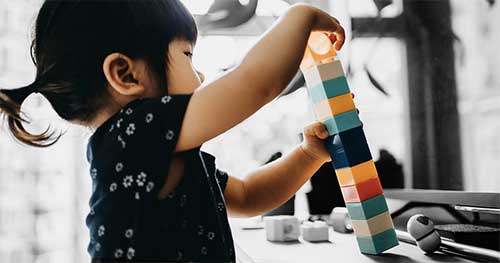
Experts believe that the best age to start learning to count is around 3 years old. A three-year-old child actively explores the world and is interested in the properties of surrounding objects. He already understands the essence of the concepts of “little” and “many”, experiments with textures, manipulates things and involves them in actions.
But you shouldn’t expect quick and significant results from a three-year-old child. Firstly, the main activity at this age remains play, so it is unlikely that a child will want to master mathematics in the format of standard classes. Secondly, all children are different. And if one inquisitive and capable child, already at 1.5 years old, is interested not only in children’s hobbies and grasps everything “on the fly”, then another, even at 3-4 years old, cannot concentrate attention on one thing and remember a lot of new information.
Advice! Focus on the abilities and developmental characteristics of your own child, and do not try to fit him into a framework or compare him with peers.
Game for children: learning to count
At first glance, learning to count is very difficult, but as you play, everything complex becomes quite simple.
IMPORTANT: You cannot insist and force your child to play.
To play you will need:
- Dice
- Small cubes or sticks, you can use shells, nuts, pebbles
- Two containers where items will be placed
The essence of the game:
- Baby and mom take turns throwing the dice
- After the throw, together they count the value rolled and take a certain number of objects into their cup.
- The winner is the one who fills his container the fastest
You can gradually make the game more difficult by adding another die and more items. If the child has already learned to count well, you can ask him to write down the resulting number on a piece of paper.
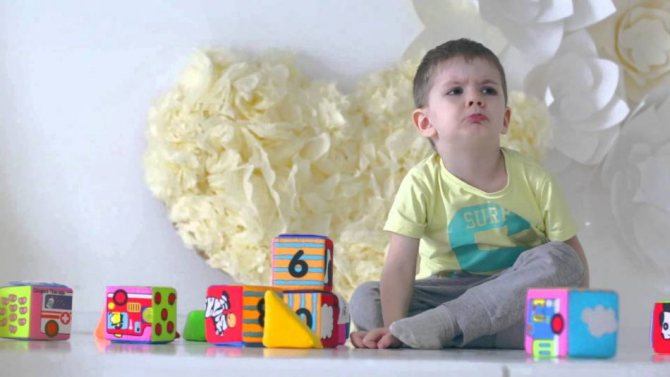
Lotto games or number counter games will help you quickly learn numbers. You can, of course, use computer educational games in teaching, but you should not resort to this method too often. There is nothing better than parents and child playing together
Learning through games
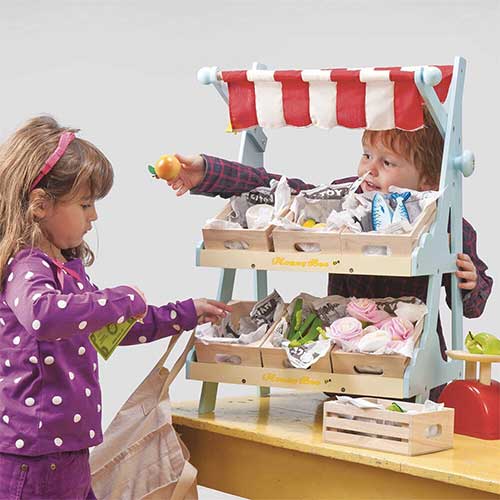
The best way for a child to learn is through play. We offer game classes for mastering counting:
- Cubes. They can not only be counted, but also used to build towers, lines or figures.
- Lego". It is better to offer the baby an option with large and bright details: they are safer and easier to understand.
- Shop game. You can use a play set with children's coins or improvised objects and materials, for example, circles or squares cut out of cardboard. Let the child come to the simulated store and ask for something. And you name the price - the number of coins or bills from 1 to 10.
- "Cells". Make cells from a box and cardboard strips, or use a ready-made accessory, such as a sock organizer or egg container. Ask your baby to place small objects in the cells and count them. Then you can remove the elements and count again.
- "Give me". Ask your baby to give different numbers of objects.
Addition and subtraction games
IMPORTANT: You can teach your child addition and subtraction through play. We need to start with the simplest things. If the child does not succeed, you should help and explain to him again what is required of him. The game should bring only pleasant emotions.
Dwarves on a walk
Required for the game:
- Cubes
- Box or other container for cubes
Progress of the game:
You should invite the child to imagine that the cubes are forest gnomes. In the evening they go into the box house, and in the morning they go for a walk.
- The child needs to count how many gnomes live in the house
- The baby turns away, and the adult takes one or more cubes, voicing this number to the child
- He must first tell himself how many gnomes are left, and then count them in the box
In the same way, you can add cubes, as if the gnomes had returned from a walk.
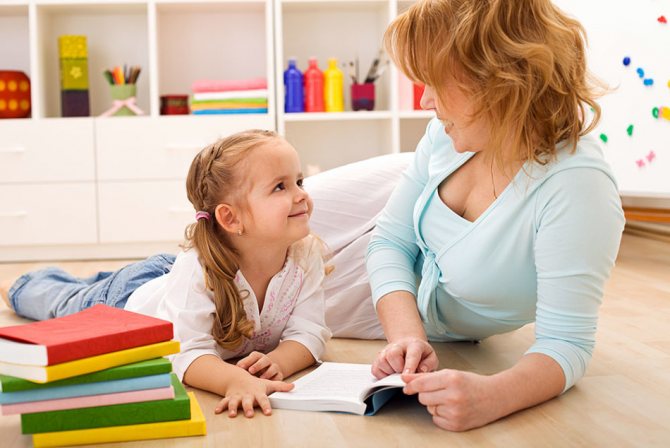
Playing together is the best way to learn addition and subtraction
Shop
To play you need:
- Toys that will be sold
- Substitute money, candy wrappers
Progress of the game:
- Each toy should have a price tag attached to it.
- Give your child the required amount of candy wrappers
- A child comes to the store to make a purchase, he should count how many candy wrappers he has, more than the indicated price on the price tag or less
- Subtract the required number of candy wrappers from the total amount and announce how many of them he has left
During the game you can change places , then the baby should:
- Name the price of each toy
- Calculate whether he was given the correct number of candy wrappers, if he needs to return the excess, or ask for more candy wrappers
- Add candy wrappers for one purchase to candy wrappers for another and tell their total amount
IMPORTANT: Parents themselves can come up with games, the main thing is that the child shows interest in them and enjoys exploring the world of numbers and numbers.
Remember the numbers
There are many methods for memorizing numbers. Today, children's stores sell special cards. Learning to count is easy in everyday life, using the opportunities of the surrounding world.

While in line at the clinic or at the market, you need to count people with your child and relate the resulting number to the one shown on the card. It will also be interesting for the baby to compare who has more buttons on his clothes: his or his mother.
You can learn to distinguish numbers with five-minute lessons. They must be planned and occur regularly. The child needs to quickly show cards that show numbers and the corresponding number of circles. At the same time, the number should be named. This activity is effective when the baby is attentive and focused.
Gradually he will begin to understand the numbers and relate them to quantity. After this, the lesson can be complicated - lay out the cards in front of the child in any order and ask him to give those that correspond to the number he heard. It is useful to draw colorful numbers on sheets of paper and hang them in prominent places throughout the apartment.
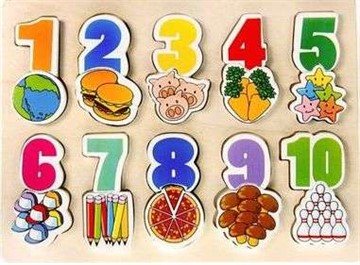
This way, memorization will be easier and more interesting. You can periodically ask your child to bring cards with a certain number. It will be easier for the child if he begins to receive the task of finding a number that corresponds to the number of beans or apples shown in the picture.
It is useful to purchase refrigerator magnets. It is easy to conduct educational activities with them, showing a lot of imagination.
You can assemble a steam locomotive from a construction set by putting into it numbers indicating the serial numbers of the cars. Special educational books and cartoons on counting are also useful. Modeling numbers from plasticine, dough, or kinetic sand will give impetus to the development and learning of arithmetic.
Methods for teaching counting created by famous teachers
Try linking one or more effective teaching methods to learning numeracy:
Peterson
Peterson's method teaches children mathematics exclusively in a playful way: with the help of cubes, drawing, and logic games.
Glen Doman
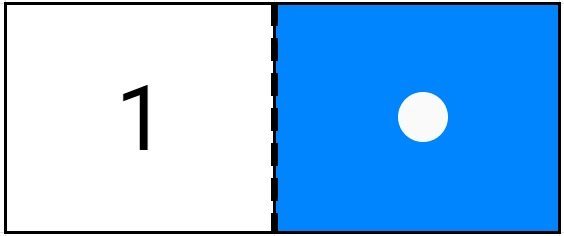
Glen Doman's method is entirely based on visualization: children see numbers and the corresponding number of points on cards, gradually mastering counting:
- Prepare cards from cardboard: write a number on one side, and on the other, draw the number of dots corresponding to this number.
- Show your child the card with a dot and clearly indicate the number “One.”
- Proceed to other cards in the same way. Don't delay - the card should take as long as it takes to pronounce a certain number.
During the first lessons, the child can act as an observer. Don't ask him to repeat it. After showing all the cards (10, 20 numbers depending on age), be sure to praise the child, tell him how much you love him and how you love to teach him. You can treat your math future to something tasty because physical rewards are an integral part of Glen Doman's methodology.
From 3-4 lessons you can start shuffling the cards, that is, showing them not in a clear numerical order. Remember the main thing - we show quickly, we praise generously.




